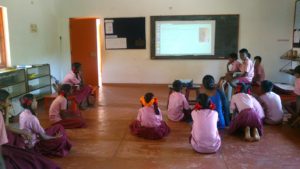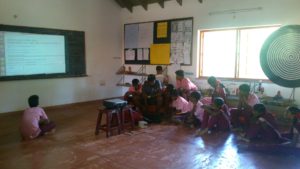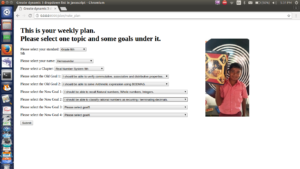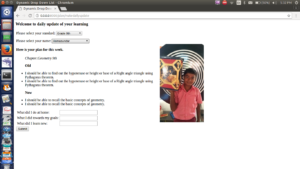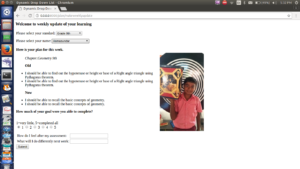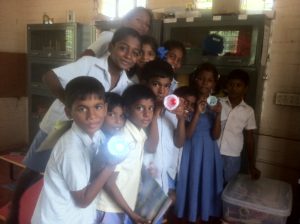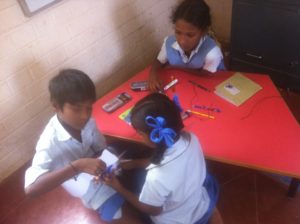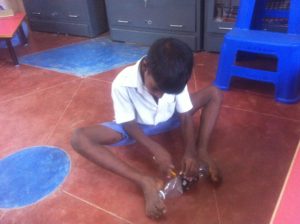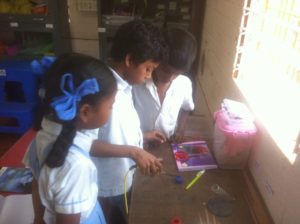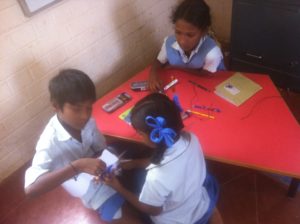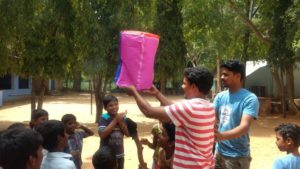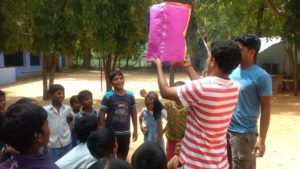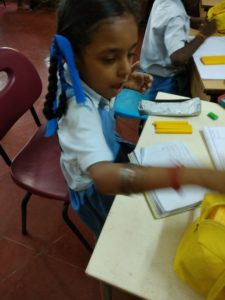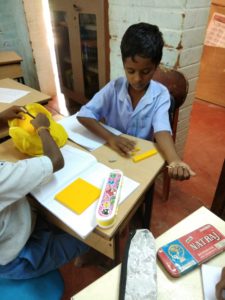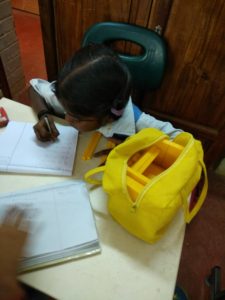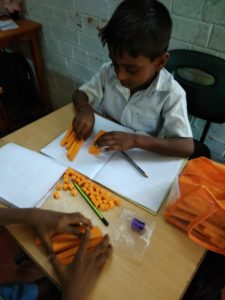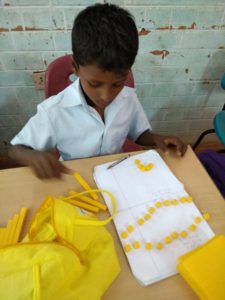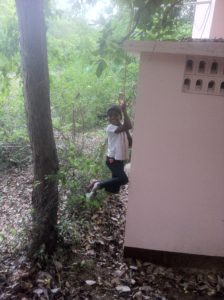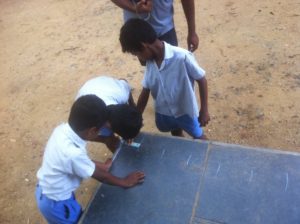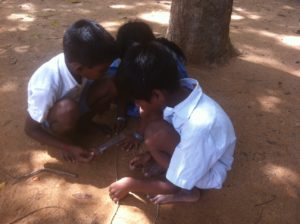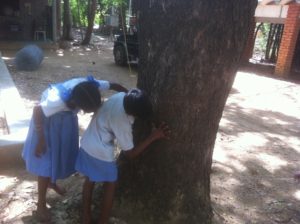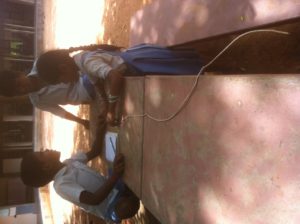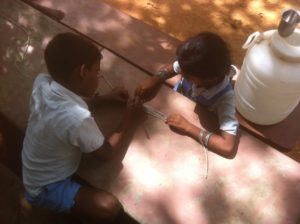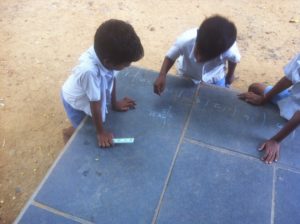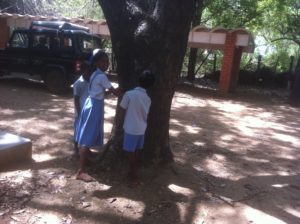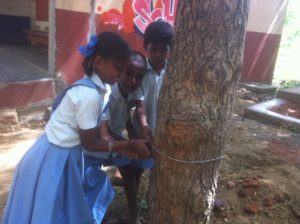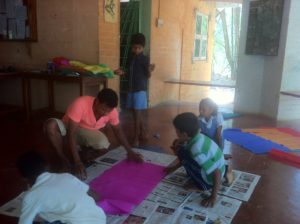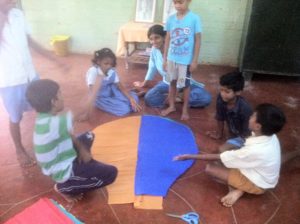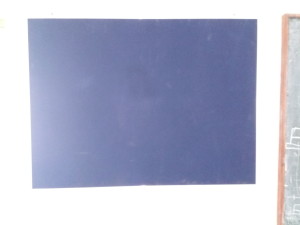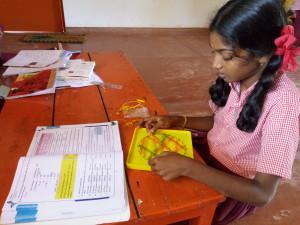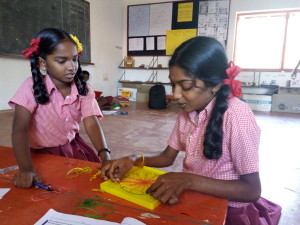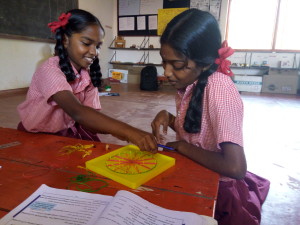Pratap and myself were working on a project to create a software which tracks the students learning plan. We did it in Django. Before students were filling their daily plan and weekly plan in an excel sheet. Typing in it was difficult for them and took much more time to fill it. So we thought this software would be much easier for them. This software contains weekly plan, daily update and weekly update. They can select their standard and name. Once they select their name their picture with things that they liked most in STEM Land will appear. In weekly update they select their goals for the week, in Daily update they select their plan for that day and in weekly update they say how much they were able to complete their goal and what will they do different in next week. Through this software they come to know where they are and how they utilized the time and where to improve. We showed the project to the student and the were really happy to see it and did their plans within few minutes.
Activity class in Isai Ambalam school
On Wednesday children had a sleepover in the school. On that day there was a power cut . Children didn’t bring their torch from their home. It was very dark and we had only one torch. They managed with that torch for that day. At that time students wanted to make a torch in the STEM land. Next day they brought water bottle and they wanted to do it. We started doing and through this process they came to know about the function of a resistor , battery and LED. Finally they built it and they will use it whenever they sleepover in the school.
Learning division
Children felt very difficult to understand what division is and why we do it. They were been explained with the fraction kit using the test tubes and the colourful beads. Using the fraction kit they learnt to divide things to number of people and was easy for them to understand the concept of division and where we apply it. They learnt division so easily by playing with the kit and were enjoying while learning it. 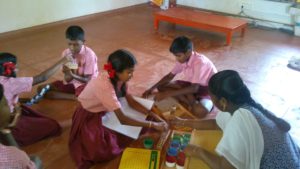
Hot Air Balloon
We made a big hot air balloon. We already completed making the balloon along with the 5th graders. Today for the Saturday’s class we decided to make it fly.
We got some old cloth and some kerosene to get hot air from the fire. We lighted it up and held the balloon on top to get hot air going in. The balloon was a big spherical structure. We waited for a long time and couldn’t get the balloon filled with hot air.
Then we discussed with the children on why the balloon did not go up. Their assumptions were
- The Balloon had holes in the structure.
- Hot air did not go inside.
- The balloon was too heavy. (We weighed the weight of the balloon and it was 206 g)
- The balloon was not properly made.
Then we decided to make a small balloon and check if it was flying. This time we made a cuboid balloon structure whose height was around 50 cm high. Again with a lot of excitement we filled the balloon with hot air. We waited and waited but it could not go up. We still don’t know the reason why the balloon did not rise up???
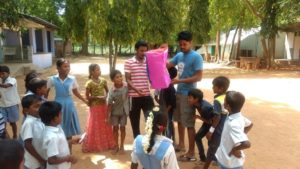
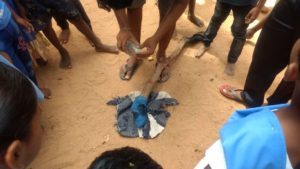
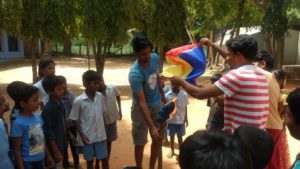
We are waiting to see one go up.
Addition/Subtraction with 3rd graders
The 3rd graders demonstrated their addition and subtraction stories that they written last week using the Dienes Blocks. Initially, the children were confused with the words addition and subtraction. They were doing subtraction instead of addition. After some more practice they were able to do well.
Measurement – 5th graders
Kishor: I learned how to measure the width of tree using thread. We measured the length of the thread using a scale of 15cm. There was team work and we were able to complete the work in time. We measured using creepers as we didn’t have any material in the beginning.
Praveen: I learned to measure width of 5 trees and compared which tree is big, small etc.. We measured the perimeter of the first building.
Guru: I learned to measure length and breadth of the kitchen using thread.
Monika: I learned to measure the width of the tree.
Sharani: I learned how to measure the length and breadth of Anitha’s house and learned to measure the width of the tree in cms
Ajay: I learned to measure the length and breadth of the prayer hall.
Pratap: I learned that our school has trees that have a circumference more than 350cm. The Gaya trees are big and there is a rain tree (Sirish / thoonga munji maram). I noticed that children don’t need to be given certain fixed instruments for measurement. They were able to find innovative ways to measure.
The first time we measured, it took everyone a long time to measure the circumference of a single tree. The next day, we gave the children a challenge to find five big trees. I noticed that they marked the first circumference measurement on the floor with chalk and thereafter, the rest of the measurements were marked in such a manner as to get a relative idea of the circumferences of different trees. The children were quick to note which tree was bigger. It was a satisfying learning and teaching experience for me.
Hot Air Balloon:
The 5th graders started to build a hot air balloon in Isai Ambalam school. We started gathering information how to make a hot air balloon. Then we watched some videos to make the hot air balloon. We found the reason why the hot air balloon fly towards the sky. The we used tissue papers to make a hot air balloon. The things that are need to make a hot air balloon are glue, tissue paper and binding wire and scissors. we learnt that the hot air moves towards the cold air in the sky and this is the reason why the hot air balloon move towards the sky. I felt the student were excited while doing it . While doing this activity I found the children were responsible for the materials and team work and helping each other and sharing the materials and everyone got equal opportunities for doing the activities.
Pratap.G
Students Taking Up Responsibility is STEM Land
We had a created a system in STEM land(Udavi school). We started to put up logical puzzles which can be solved logically and as well mathematically. At first we did not have a board to pin the puzzle papers. So, we used to stick it on the wall. Then, we bought a pin board. It was before lunch when I planned to put up the board. Rathinavelu(from 9th grade) and Dievakaran (from 7th grade) can up to me and said that they want to put up the board. I left the work to them. They measured where the holes needed to be put and marked it. Then, they drilled holes on the mark. They took turns in hitting the wood piece and screws inside the holes that were drilled. After all the hard work they fixed the board on the wall.
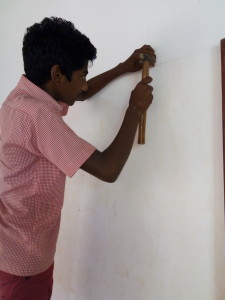
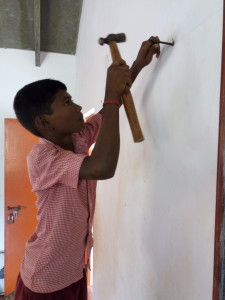
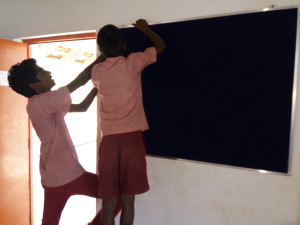
- To mention, they did all this in their lunch break. That day, they went to lunch late.
- This showed me that children here want to take responsibility for this place.
- They learned how to drill and how to share work their equally.
Learning Circle using Geo Gebra
Shalini, student from 7th grade learned about circle in her textbook. She was learning the topics on chord, diameter, circumference and ratio between circumference and diameter.
- She used Geo Board(Montessori material) to learn these topics
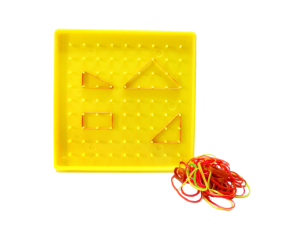
- The Geoboard is a tool for exploring a variety of mathematical topics introduced in the elementary and middle grades. Learners stretch bands around pegs to form line segments and polygons and find perimeter, area and more.
Shalini learning about circle using the Geo Board
Outcomes / What she knows now and is able to do
- Chord is a line segment drawn at any two points in a circle.
- Diameter is a chord that passes through the center of the circle.
- Circumference is the perimeter of the circle.
- She is able to find the ratio(which is 3.14(pi)) if she either knows the circumference of the circle or the diameter.
- She is now able to use the geo board and demonstrate the above topics to her friends.
Nuclear Fission Reaction with Scratch
The following video demonstrates the nuclear fission reaction that was made during the advanced scratch course offered at STEMLAND. I had partnered up along with a 8th grader from Udavi school to create it.


